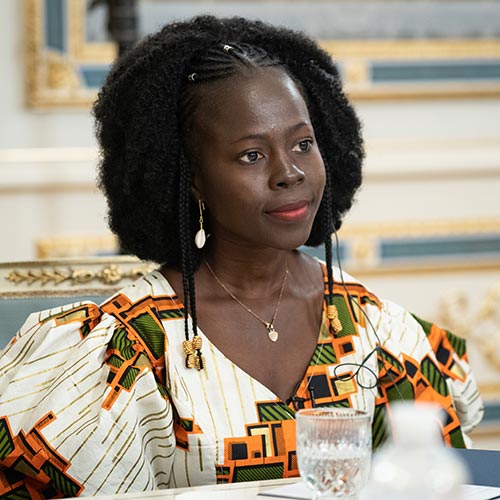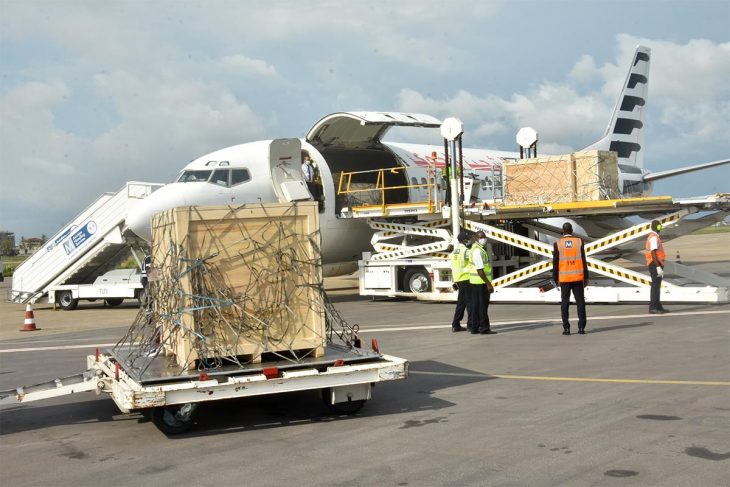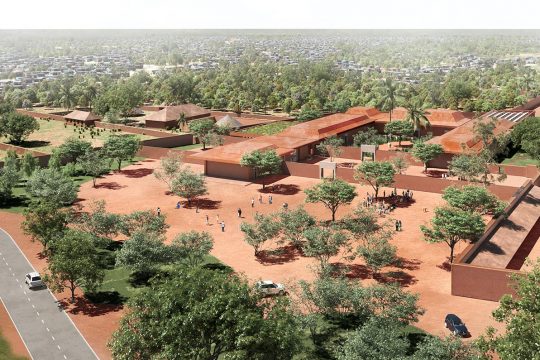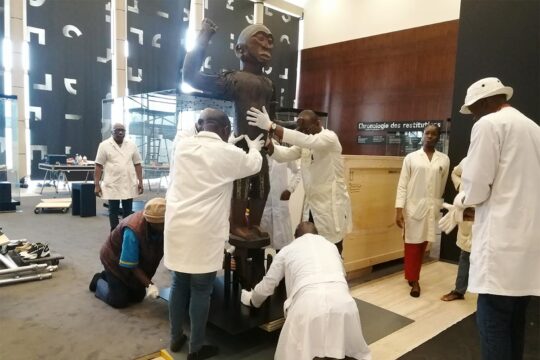It is 3:10 pm on November 10 when the cargo plane containing the boxes of royal treasures lands on the airport tarmac of Cotonou, economic capital of Benin. On board are twelve bulky wooden boxes accompanied by a Beninese curator, Calixte Biah. He has been keeping an eye on things since the plane took off from Paris via a stopover in Tunis. He looks a little worried. Even after arrival, he wants to make sure that delivery of the works is complete before telling us anything. "Let me finish first," he says when we try to ask about the trip.
From the cargo plane, the boxes are transported one by one by loaders in three trucks marked with pictures of the works, under the satisfied eyes of Benin’s culture and foreign ministers, who have been working for years on this restitution process. The handling at Cotonou airport lasts more than an hour. During this time, curious people and supporters of the president are waiting on the route that the vehicles carrying the treasure will have to take, from the airport to the presidential palace - about 4 kilometres.
Hundreds of people are massed on both sides of this John Paul II avenue. The most enduring have been there since 11 am. Some, sitting on the ground, have fled the sun's sting to find refuge under the trees lining the sidewalk. Others, standing and much more enthusiastic, ignore the sun's rays and enhance the atmosphere with the sound of their castanets and the rhythm of their bodies draped in uniform fabrics. Some have taken out their ceremonial outfits such as masks, stilts, neck beads, and cloths tied to the chest. The closer we get to the Presidency, the more the crowd becomes animated. Many are waving small flags bearing the effigy of the head of state; it is as if we were at a presidential campaign. At the last crossroads, before the Marina Palace, motorcycle taxi drivers hold a large banner where they welcome, in several languages, the 26 cultural goods: "Ekabo, Kawerou, Mikwabo, Gabikè, welcome to our illustrious royal treasures after 130 years in France”.
Applause and small disappointments
The precious convoy sets off from the airport, and in front of it, horsemen from the north of the country give it a majestic look. Once en route, it moves at a moderate speed, to the applause of the crowd, which follows it from behind the ropes separating people from the road. Faces full of questions look at the white vehicles carrying the boxes protecting the works. Since it is impossible for people to see the contents, some are impressed by the images of the thrones and statues displayed on the trucks. "Wow, these are the pictures of the works," they all assume.
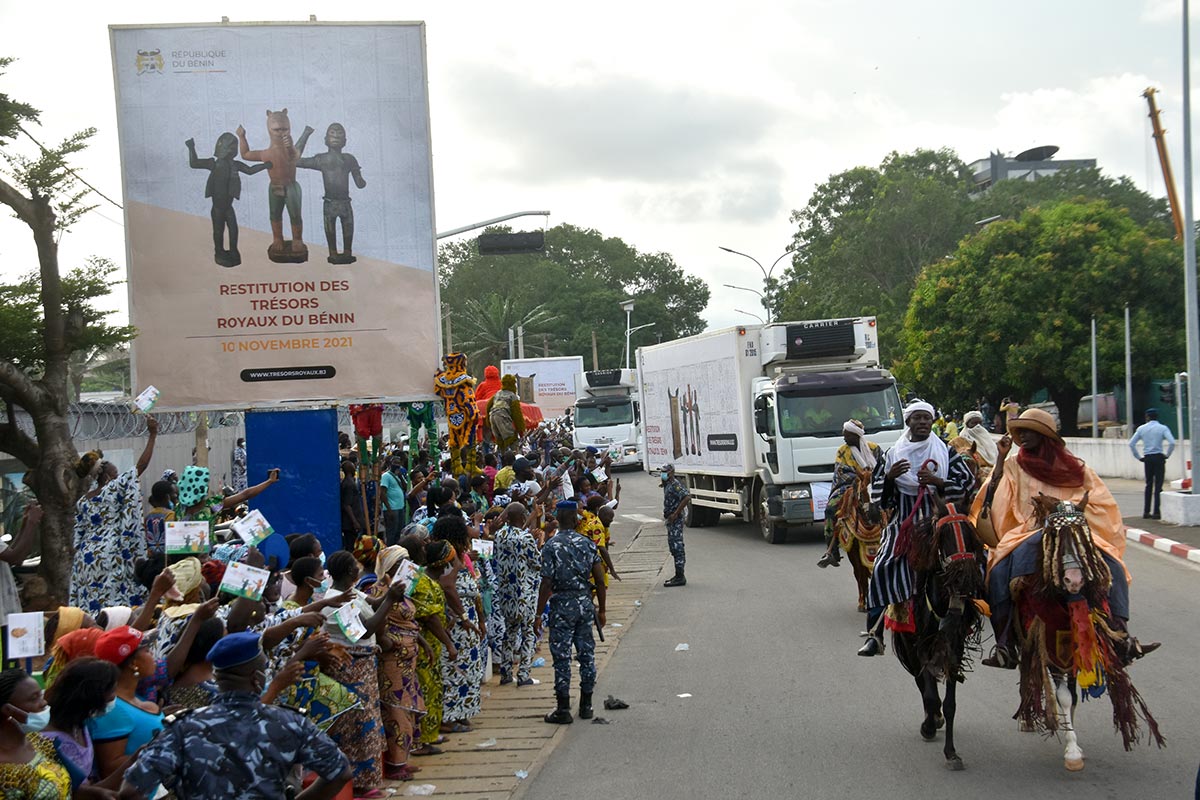
Across the street, people are singing and dancing. “Bravos" escape from the crowd. In symbiosis with the public, the driver of the first truck gives a thumbs in response. Motorcycle taxi drivers, hoping to catch a glimpse of the royal treasures, stand on the seats of their machines. But it's a waste of time. Many of them thought they could see the thrones, statues and assen (portable altar) of their ancestors. And so they are disappointed. "I thought they were going to show us the works. They just passed by and left. I'm already going home. I didn't see anything," said a spectator on his way out. "It's a big event, I'm overwhelmed with emotion, but we would have liked it to have been a bit open," says another, not far away.
Two kilometres away, women from the market are nevertheless happy, even if they have not seen any works. "I represent the Fiyégnon Houta market, I came to look at our goods that they brought. I am sure they are all in the vehicles. So everyone is happy."
Two months of acclimatization
The spectators are lined up along the course to the gate of the presidential palace. Here, the decibels fly higher. The rhythm of the dancers is more frenzied. The approach of the procession makes the adrenalin rise. And the procession finally enters the presidential palace.
Change of scene! The tone is now solemn. The guests are installed. Less than 300 places have been set aside for this party. The Republican Police band is ready. The crowned heads, the presidents of institutions, the French ambassador are in the front row. The head of state, in a half-season suit, walks the red carpet two minutes before the scheduled time. A few moments later, the trucks carrying the twelve boxes approach the garden. The crate containing the throne of King Guézo, which is almost 2 metres high, is the only work placed symbolically on the red carpet. The others remain in the trucks. Then cannon shots are fired before the national anthem is played.
After this ceremony, the artistic aspect of the celebration takes place. Three scenes follow one another on stage. The dancers of the Royal Dance Conservatory of Abomey open the ball with the graceful dance of the Zinli. The princes of the North follow with a more jerky rhythm, the têkê, before another dance group closes the show.
It is the Minister of Culture who begins the speech sequence. "Symbolically, this ceremony wants to pay tribute to all this heritage. We reassure you that these 26 works are there. From today, they will be stored for two months in a place provided for this purpose, in the Presidential Palace, for a period of acclimatization. The works will not be unpacked. And it is only in two months, still here, that these works will be exhibited for three months. After these three months, the works will go to Ouidah for a temporary exhibition for three years, at the Portuguese fort, in the governor's house, while waiting for the end of the construction of the Museum of Dahomey Amazons, the MEHAD, in Abomey," explains Jean-Michel Abimbola.
Sacred Rituals and Secular Power
The ceremony ends with an address by the President of Benin. For almost thirty minutes, Patrice Talon says how much he is proud to receive these works and he takes the opportunity to respond to a controversy surrounding the restitution. Indeed, some people expected a ritual to welcome these objects in the cradle of Vodoun. This was not the case, and President Talon wants to explain it. "Their artistic beauty is for us the testimony of what we are, what we have been, our greatness. Everyone, visiting them, will be completely free to exchange with these works the deep feelings that animate him or her. Everyone will be free to establish with these relics the link that they wish to establish. But in our common, republican, secular identity, these works have no religious or spiritual character for the Republic. If the spirituality that can be conferred on them is only a neutral spirituality, then it is republican. But if it is a particular spirituality, linked to a spiritual current, then the Republic respects it, but will not take it up."
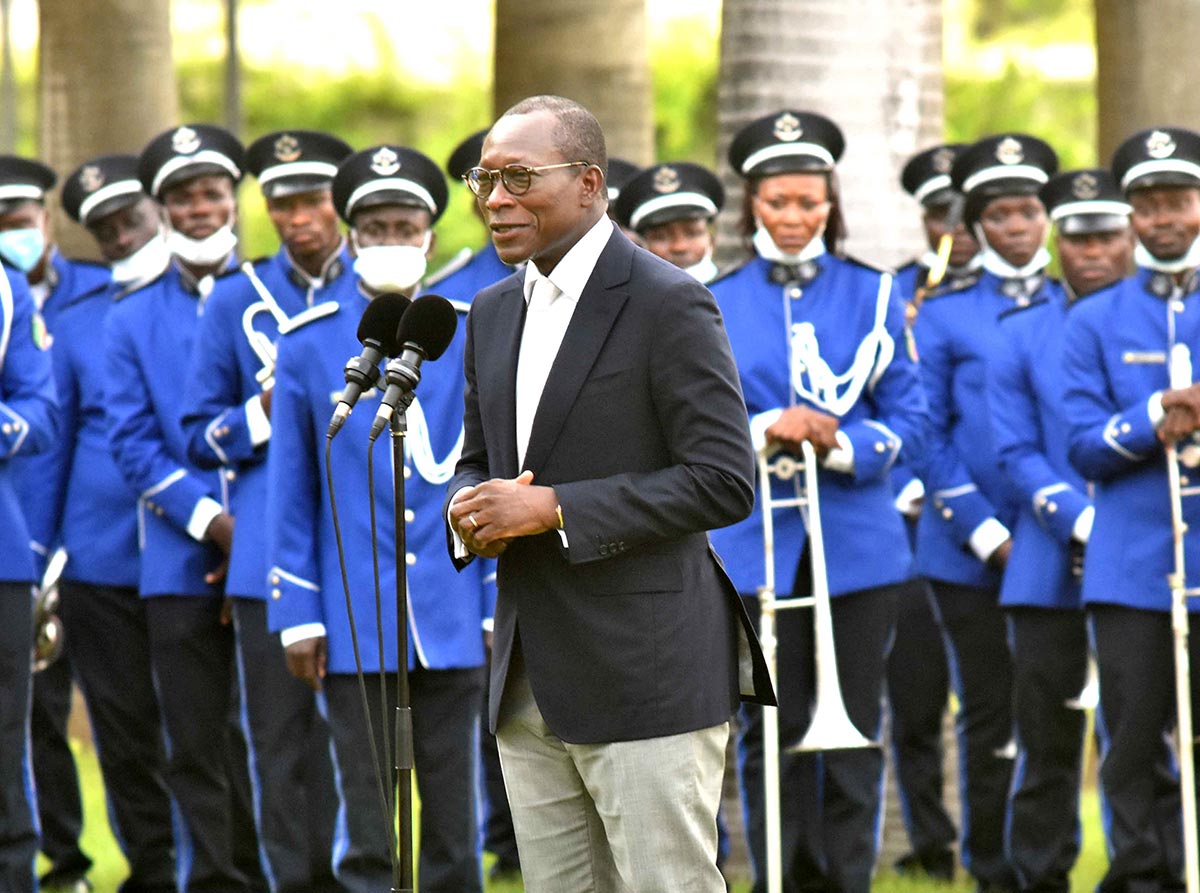
The president of the Association of the Kings of Benin does not seem to give up. In an aside after the presidential speech, His Majesty Kpodegbe let us understand that the returned works were soiled during the looting and he still demands a ceremony to give them back their sacred character.
A step in a long restitution process
Patrice Talon has two distinguished guests during this ceremony: Felwine Sarr and Bénédicte Savoy, the authors of a famous report on restitutions, handed over to French President Emmanuel Macron in November 2018. It was during the delivery of this report that Macron announced the return of the 26 royal works claimed by Benin. But Sarr and Savoy recommended much more restitution of cultural heritage acquired by force or trickery during the colonial period. And Benin hopes to recover other looted works. On November 9, at the signing of the restitution act at the Elysée Palace in Paris, President Talon made this clear, citing in particular a work symbolizing the god Gou (god of metals and forging) and the tablet of the fâ (works of divination).
On the sidelines of the ceremony, French ambassador Marc Vizy assures us that the restitution process has only just begun. "It is a whole partnership that has marked an important stage with the physical return of the works to Benin. But it will continue. [There will be] other restitutions that we will prepare with the same care and attention to detail." However, there were some big absentees during these official celebrations, including leaders of the political opposition. The return of the works could have brought together all the sons of the country for the time of a ceremony, beyond political divide. This was not the case, even if the Beninese are now looking forward to the public opening of the presidential palace when they will finally see the treasures hidden in these boxes.

